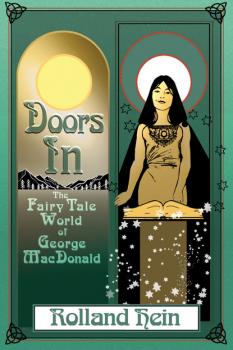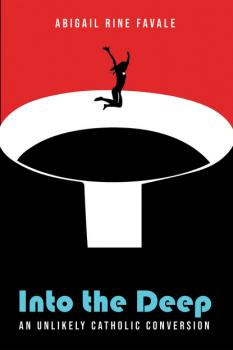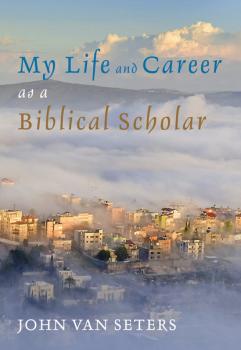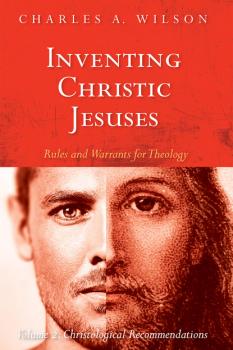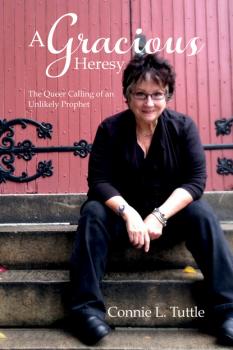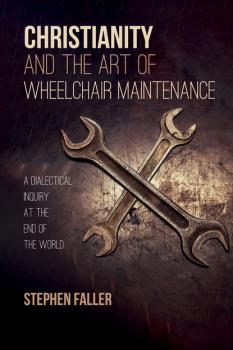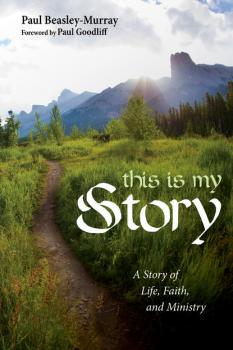ТОП просматриваемых книг сайта:
Биографии и Мемуары
Различные книги в жанре Биографии и Мемуары, доступные для чтения и скачиванияАннотация
George MacDonald wrote fairy tales for both children and adults to demonstrate the essential role of the imagination in apprehending spiritual truths. He explained: «. . . undefined, yet vivid visions of something beyond, something which eye has not seen nor ear heard, have far more influence than any logical sequences whereby the same things may be demonstrated to the intellect.» Rolland Hein undertakes to show how MacDonald's tales contain such visions, helping readers to experience for themselves glimpses of «something beyond» and catch exciting insights into eternal truths.
Аннотация
Into the Deep traces one woman's spiritual odyssey from birthright evangelicalism through postmodern feminism and, ultimately, into the Roman Catholic Church. As a college student, Abigail Favale experienced a feminist awakening that reshaped her life and faith. A decade later, on the verge of atheism, she found herself entering the oldest male-helmed institution on the planet–the last place she expected to be. With humor and insight, the author describes her gradual exodus from Christian orthodoxy and surprising swerve into Catholicism. She writes candidly about grappling with wounds from her past, Catholic sexual morality, the male priesthood, and an interfaith marriage. Her vivid prose brings to life the wrenching tumult of conversion–a conversion that began after she entered the Church and began to pry open its mysteries. There, she discovered the startling beauty of a sacramental cosmos, a vision of reality that upended her notions of gender, sexuality, identity, and authority. Into the Deep is a thoroughly twenty-first-century conversion, a compelling account of recovering an ancient faith after a decade of doubt.
Аннотация
The #MeToo movement is a global phenomenon. Several Christian organizations have been engaging with issues of abuse against women in places like Africa and Asia. Much of this happens among internally displaced or external refugees.
I was reared in a New Delhi slum, and saw much of the horrors of human trafficking among the low caste and outcaste people among whom I lived.
These kinds of atrocities against girls and women–internally displaced refugees–rightly raises much anger. Are there solutions?
My students and leaders of several organizations have asked me to write a biblical response to issues raised by the #MeToo movement and the global horror of sexual trafficking of girls and women.
This book provides a biblical response to issues raised by the #MeToo movement–questions that I have had for many years, going back to my childhood days in that New Delhi slum.
My thesis is that women experienced these abuses in ancient societies in very heinous ways. This is seen clearly in ancient Sumerian, Egyptian, and Roman etc. religions. I argue that the Bible sets out to counter attitudes and religious practices of sexual abuse against women.
The Bible is the original #MeToo movement.
I was reared in a New Delhi slum, and saw much of the horrors of human trafficking among the low caste and outcaste people among whom I lived.
These kinds of atrocities against girls and women–internally displaced refugees–rightly raises much anger. Are there solutions?
My students and leaders of several organizations have asked me to write a biblical response to issues raised by the #MeToo movement and the global horror of sexual trafficking of girls and women.
This book provides a biblical response to issues raised by the #MeToo movement–questions that I have had for many years, going back to my childhood days in that New Delhi slum.
My thesis is that women experienced these abuses in ancient societies in very heinous ways. This is seen clearly in ancient Sumerian, Egyptian, and Roman etc. religions. I argue that the Bible sets out to counter attitudes and religious practices of sexual abuse against women.
The Bible is the original #MeToo movement.
Аннотация
Despite growing up in a poor family during the 1930s and '40s, Van Seters eventually excelled at the University of Toronto and earned a PhD at Yale University in ancient Near Eastern and Hebrew studies. Before Van Seters became a teacher, he and his wife spent three-quarters of a year in Palestine, becoming familiar with the whole region. Later in his career Van Seters assisted in archaeological expeditions in Jordan and Egypt. Visits to the Near East across his career broadened his understanding and appreciation of the biblical texts he studied professionally. Van Seters spent most of his working life teaching in universities–first at the University of Toronto, and then for over twenty years at the University of North Carolina, Chapel Hill. This book not only chronicles what Van Seters has accomplished as a biblical scholar but also tells how he has become such a scholar. He hopes that experiences recorded here may guide young scholars to develop fruitful careers in biblical studies.
Аннотация
In the first comprehensive proposal for revisionist theology's deployment of historical Jesus research, Inventing Christic Jesuses rejects positions that insulate theology from Jesus research. By setting out theological methods, warrants, and rules, in dialogue with an analysis of the Jesus historians of the Third Quest (c. 1980-2010), the study charts a path toward a quested christology positioned between categorical rejection and uncritical acceptance of historical results on Jesus. Volume 1, Method, analyzes the methods and values of historical research on Jesus and identifies the retrojective activity of value production when historians, in conversation with historical sources, invent images of Jesus.
Volume 2, Christological Recommendations, gathers potential contributions of Jesus research for revisionist theology according to the cataphatic, apophatic, and eminent pattern of classical theology. By attending to the limits and opportunities afforded by historical research, both negative and positive, the argument retrieves for theology the complex way that historians shape same and different, association and dissociation in the production of their Jesuses. Then it analyzes how values shape Jesuses in a pervasive Narcissus project to invent a self (and a community) through imaging Jesus. Proposing that the disciplined invention of Jesuses is highly useful for theology, the book ends with recommendations for a quested christology.
Volume 2, Christological Recommendations, gathers potential contributions of Jesus research for revisionist theology according to the cataphatic, apophatic, and eminent pattern of classical theology. By attending to the limits and opportunities afforded by historical research, both negative and positive, the argument retrieves for theology the complex way that historians shape same and different, association and dissociation in the production of their Jesuses. Then it analyzes how values shape Jesuses in a pervasive Narcissus project to invent a self (and a community) through imaging Jesus. Proposing that the disciplined invention of Jesuses is highly useful for theology, the book ends with recommendations for a quested christology.
Аннотация
Take one wildly naive, deeply flawed, completely unconventional woman and stir in God. Add to the mix that she is a lesbian, feminist, army brat, and single mom, and what you get is an earnestly radical Christian on a mission. Her response to an insistent call to prophetic ministry is acutely human and terminally messy. Prone to veer off course, she wrestles angels who repeatedly return her to her trajectory. The prophetic ministry to which she is called ends up taking place in hundreds of small daily acts rather than the great act that she had hoped for.
Аннотация
After twenty years, Stephen Faller shares his journey into seminary and ordained ministry. This book reveals the story of how someone with a lifelong disability, cerebral palsy, might find his way into ministry as a hospital chaplain; there is a certain irony in that. While particular in its own right, this story will speak to anyone in college or graduate school studying one of the many disciplines hoping to make the world a better place.
Through narrative and dialogue, Faller engages philosophers and theologians alike. This is an intimate text that seeks to integrate mind, body, and spirit that situates itself more beyond the margins than as marginalized.
Just as Faller's own narrative is contextualized by disability, this personal work is contextualized in our polarized and politicized culture, as it considers the meaning of ministry for a contemporary time. His is an embodied text that speaks to a multicultural society, even if that body carries brokenness and even if that society is divided.
Through narrative and dialogue, Faller engages philosophers and theologians alike. This is an intimate text that seeks to integrate mind, body, and spirit that situates itself more beyond the margins than as marginalized.
Just as Faller's own narrative is contextualized by disability, this personal work is contextualized in our polarized and politicized culture, as it considers the meaning of ministry for a contemporary time. His is an embodied text that speaks to a multicultural society, even if that body carries brokenness and even if that society is divided.
Аннотация
This Is My Story is an unusually fascinating account of one man's life. ·It is a story of the making of a man, initially written with grandchildren in mind–"Who was my grandfather? What kind of person was he?" ·At another level it is a story of a growing faith, telling how amidst the ups and down of life he has remained a «soft-hearted» pilgrim. ·At yet another level it is a story of the making of a leader who never stopped learning how to lead, care, preach, and engage in effective mission. ·Perhaps even more significantly, it is also a story of a ministry, in which the author never lost his sense of delight and privilege in his calling to be a pastor. ·Finally, as one who has at time been at the center of controversy, it is an opportunity to tell «my side of the story.» This is a book for pastors–and for any Christian–who wants the «inside story» of the pains and triumphs of a Christian leader.
Аннотация
Somewhere in the mists of time, between history and hagiography, stands the great evangelist and missionary St. Patrick. Raised a «cultural Christian,» Patrick's encounter with God during captivity in Ireland transformed his life and the history of a people. Freedom from slavery, and a return home to Britain, produced the divine summons–Vox Hibernia–to return to Ireland and the place of captivity in order to witness to the gospel of Jesus Christ. Christian witness in twenty-first-century Vancouver, Seattle, or Portland is a world away from fifth-century Armagh, Slane, or Cashel. Yet, the great evangelist to pre-Christian peoples of Hibernia has much to teach us as we seek to engage our secular, post-Christian context. There is wisdom in the missional leadership of the one we call St. Patrick that goes well beyond tales of snakes and shamrocks. How might Patrick's mission experience with pre-Christian peoples direct our contemporary missional encounter with post-Christian peoples? Come explore the story of the shepherd slave turned shepherd of souls and discover that there is power still in the legacy of Patrick, when yoked with the Spirit-filled presence and purpose of the risen Christ.
Аннотация
Letha Dawson Scanzoni changed the landscape of American evangelicalism through her groundbreaking work on the gospel-based intersection of gender and LGBTQ justice. She coauthored two of the first books that support women's equality and LGBTQ rights with the Bible: All We're Meant to Be and Is the Homosexual My Neighbor? In all her work Scanzoni applies the liberating message of Jesus to women and to people who have been marginalized by church and society because of sexual orientation. Building Bridges combines an exploration of the life and work of Letha Dawson Scanzoni with stories of people she continues to empower through her writing and the Evangelical & Ecumenical Women's Caucus – Christian Feminism Today, an organization she cofounded. This book illustrates her growing influence as she continues her prophetic collaboration with new generations. In addition, it provides resources for churches as they build bridges for their ministries of liberation, justice, and peace.

